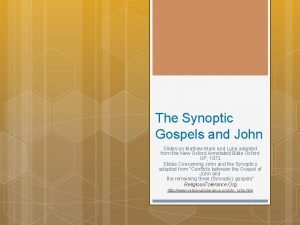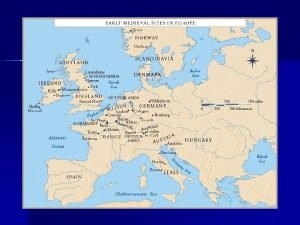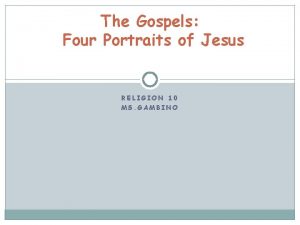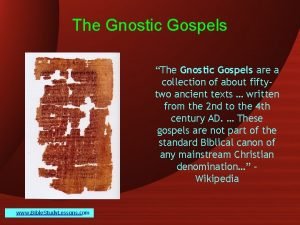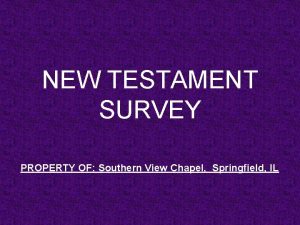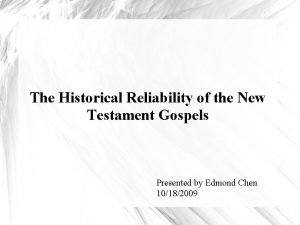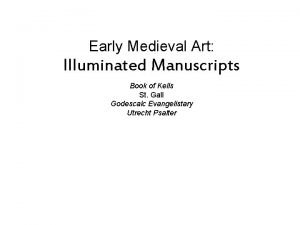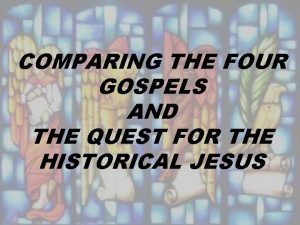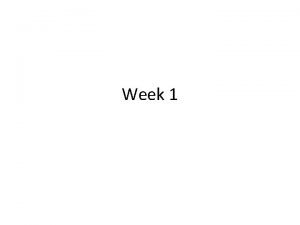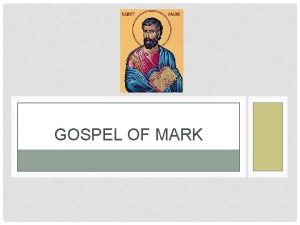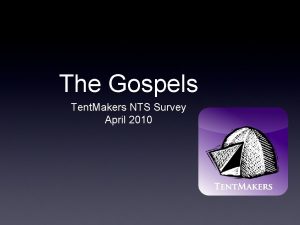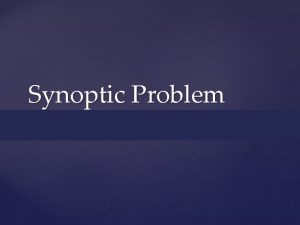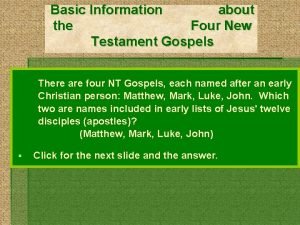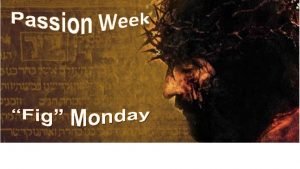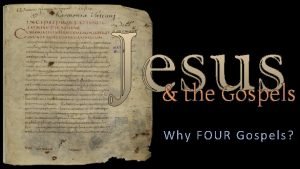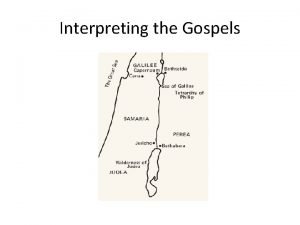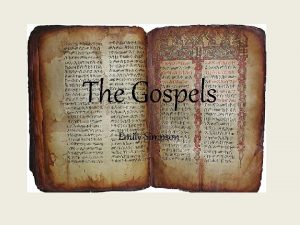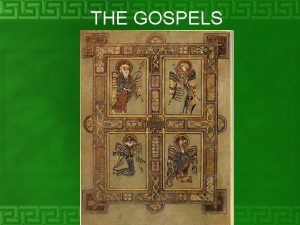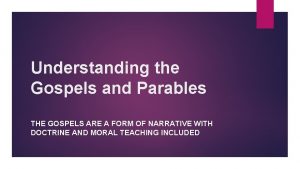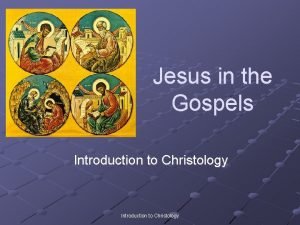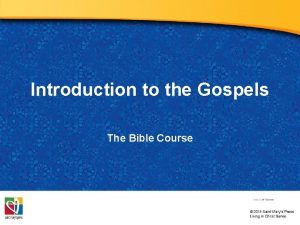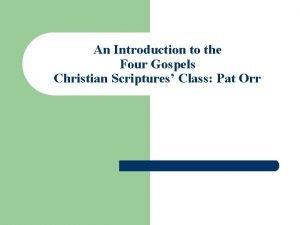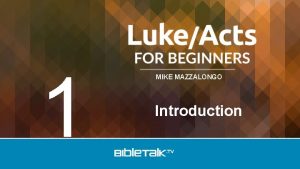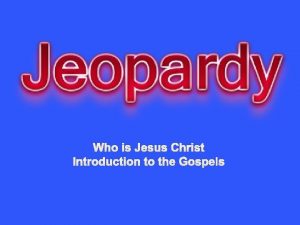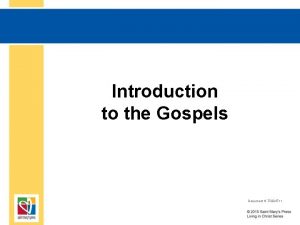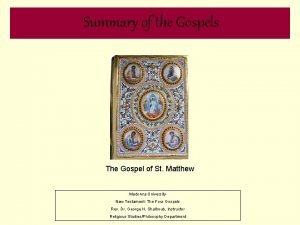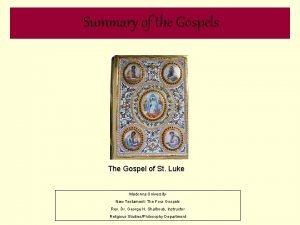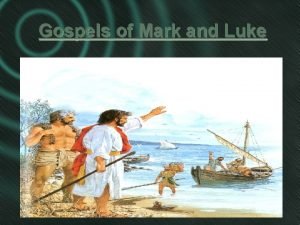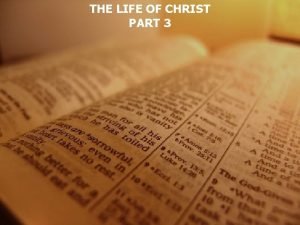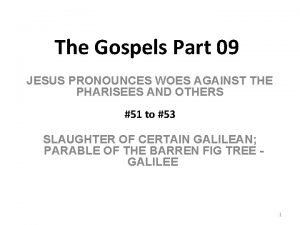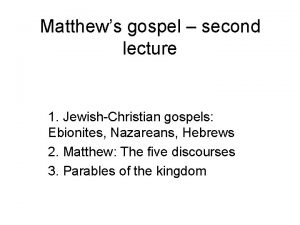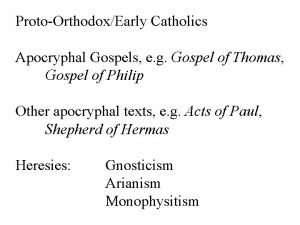Introduction to the Gospels Introduction to the Gospels
























- Slides: 24

Introduction to the Gospels

Introduction to the Gospels • Source criticism – synoptic problem • Form criticism • Redaction criticism

Source Criticism • Literary relationship of Matthew, Mark, and Luke to each other, as against John. – Much similarities in Matt, Mark, and Luke • Compare Matt 14: 22 -33 and Mark 6: 45 -52 – Matthew has a longer version – Both stories end in different ways Matthew on a confessional manner; Mark on a critical note

Source Criticism • Of the 661 verses in Mark, 500 appear in Matt, 350 in Luke. • 235 verses common to Matt and Luke, and do not appear in Mark

Source Criticism • The similarities: – Often verbatim for the entire clauses and sentences – agreement in wording • Difficult to explain the differences among the writers – esp. if Jesus spoke in Aramaic and these agreements are in Greek • If compared to John, why are there so few verbal similarities (92%) unique?

Source Criticism • The similarities: – Agreement also extends to parenthetical or editorial comments, • e. g. , Matt 24: 15//Mark 13: 14; • Matt 9: 6//Mark 2: 10//Luke 5: 24; • Matt 27: 18//Mark 15: 10

Source Criticism • The similarities: – Agreement in the order of narratives not linked together chronologically • Matthew’s sermon of the mount (Matt 5 -7) and Luke’s sermon on the plain (Luke 6: 17 ff, and other places) • Matthew’s Parables of the Kingdom in Matt and Luke’s Parables in Luke 8 and 13

Source Criticism • Synoptic Problem - relates to source criticism • Luke’s prologue (1: 1 -4) suggests some dependent on various sources • Purpose: to identify the written traditions and to determine the relationships of the synoptic gospels with the hope of ascertaining the purpose of the evangelists in writing the gospels.

Source Criticism: Solution • Augustinian Hypothesis – Matthean priority – Follows canonical order – Wenham argues for early dating

Source Criticism: Solution • Griesbach Hypothesis – Matthean priority, with Mark as the reader’s digest version of Matt and Luke

Source Criticism: Solution • Oxford Hypothesis – Variation of the hypothesis – Argues for Markan priority – 2 -source hypothesis, e. g. Carson – 4 -source hypothesis, including Q – 4 source hypothesis with Proto-M – Problem with Q

Source Criticism: Solution

Source Criticism: Solution Four Source Hypothesis

Source Criticism: Solution • Farrer Hypothesis – Rejects Q – Accept Markan priority – Luke uses Matthew

Source Criticism: Solution • Literary Independent Hypothesis – Eta Linnemann

Source Criticism: Solution • The question of Q – See Mark Goodacre – No one has ever seen Q – Difficult to sustain the existence of Q

Source Criticism: Solution • Pool of: – oral traditions – written sources (cf. Luke’s prologue in 1: 1 -4) – Memory of the eyewitnesses?

Source Criticism: Solution • Summary: • Most accept Markan priority – The argument from length – Mark is shortest, yet not an abridgement – The argument from grammar - Mark’s poorer writing style • the use of Aramaic in Mark 3: 17, 7: 11. • Redundancy – Mark 15: 25; cf. Matt 27: 35; Luke 23: 34

Source Criticism: Solution – The argument from style • Mark’s harder reading – see Mark 6: 5 -6//Matt 13: 58; Mark 10: 18//Matt 19: 17//Luke 18: 19; Mark 1: 12//Matt 4: 1//Luke 4: 1 • Mark’s stylistic features in the frequent use of “immediately”, “and immediately” • Mark’s use of historical present – 151 against 78 in Matt and 9 in Luke

Source Criticism: Solution – The argument from fatigue • See Matt 14: 1 and 9: tetrarch king (reproducing Mark 6: 26? ) • See Luke 9: 10, 12 feeding of 5000 in a city called Bethsaida a deserted place (reproducing Mark 6: 35)?

Form Criticism • Method of analysis focusing on individual, selfcontained units of materials • Champion: Bultmann • The task: identifying the process of transmission; classifying the individual pericopes into various forms, assigning a Sitz im Leben, and reconstructing the history of the tradition

Form Criticism • Examples of Forms – “I AM” sayings in John – Pronouncement stories – Mark 2: 13 -17; 3: 31 -35 – Parables – Speeches – Miracle stories • What kind of changes? ? • No longer in “fashion” today

Redaction Criticism • The way the redactors/editiors/evangelists change their sources or utilise the traditions • Task: to rediscover the evangelist’s theology and setting

A way forward • Canonical & Narrative approach? • Avoiding harmonising of the gospels • Paying attention to individual voice of the evangelist
 The date
The date St matthew ebbo gospels
St matthew ebbo gospels 4 portraits of jesus in the gospels
4 portraits of jesus in the gospels David e. pratte wikipedia
David e. pratte wikipedia Comparison of the four gospels chart
Comparison of the four gospels chart The virgins memo genius
The virgins memo genius Reliability of new testament
Reliability of new testament Chi rho iota page from the book of kells
Chi rho iota page from the book of kells Comparing the four gospels
Comparing the four gospels Synoptic gospels
Synoptic gospels List the synoptic gospels
List the synoptic gospels Sunoptic gospels
Sunoptic gospels Gospels
Gospels Business confidence definition
Business confidence definition Four new testament gospels
Four new testament gospels Is the triumphal entry in all four gospels
Is the triumphal entry in all four gospels Hát kết hợp bộ gõ cơ thể
Hát kết hợp bộ gõ cơ thể Frameset trong html5
Frameset trong html5 Bổ thể
Bổ thể Tỉ lệ cơ thể trẻ em
Tỉ lệ cơ thể trẻ em Voi kéo gỗ như thế nào
Voi kéo gỗ như thế nào Tư thế worm breton
Tư thế worm breton Hát lên người ơi alleluia
Hát lên người ơi alleluia Các môn thể thao bắt đầu bằng tiếng đua
Các môn thể thao bắt đầu bằng tiếng đua Thế nào là hệ số cao nhất
Thế nào là hệ số cao nhất
